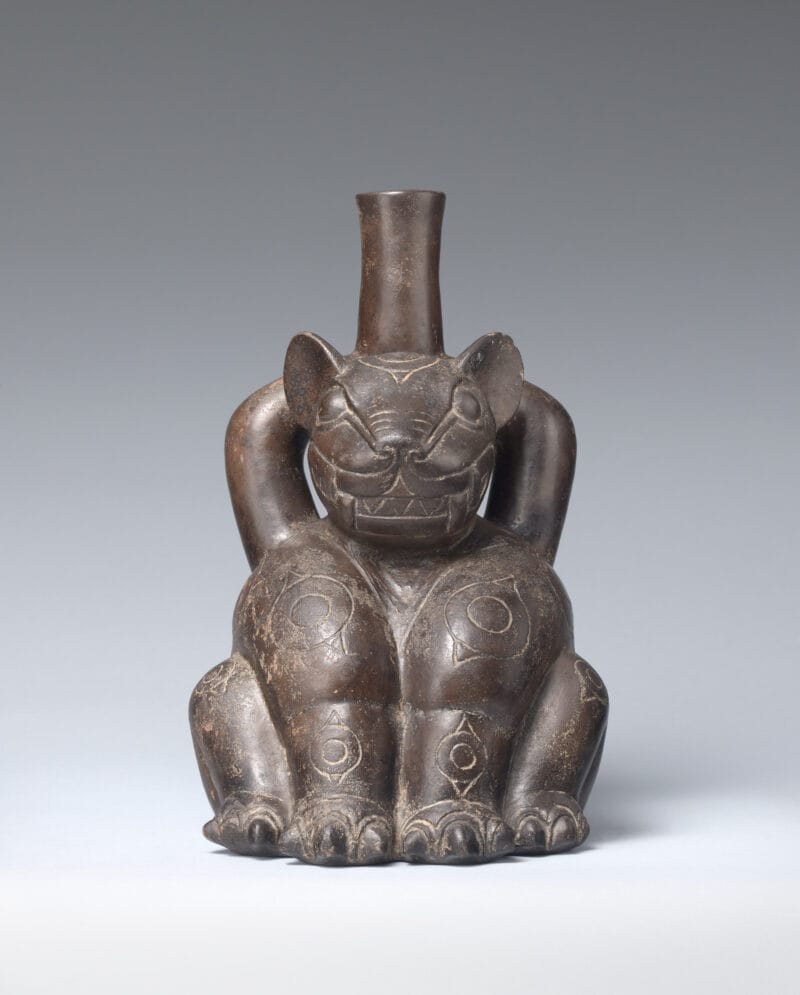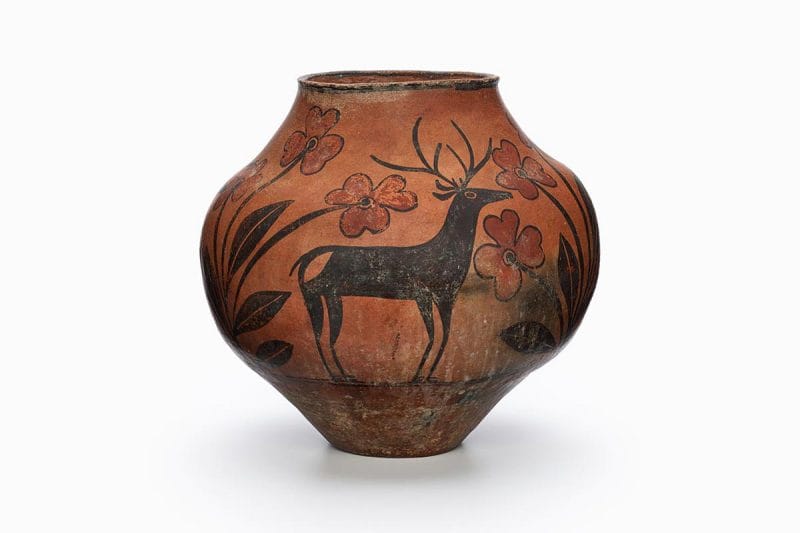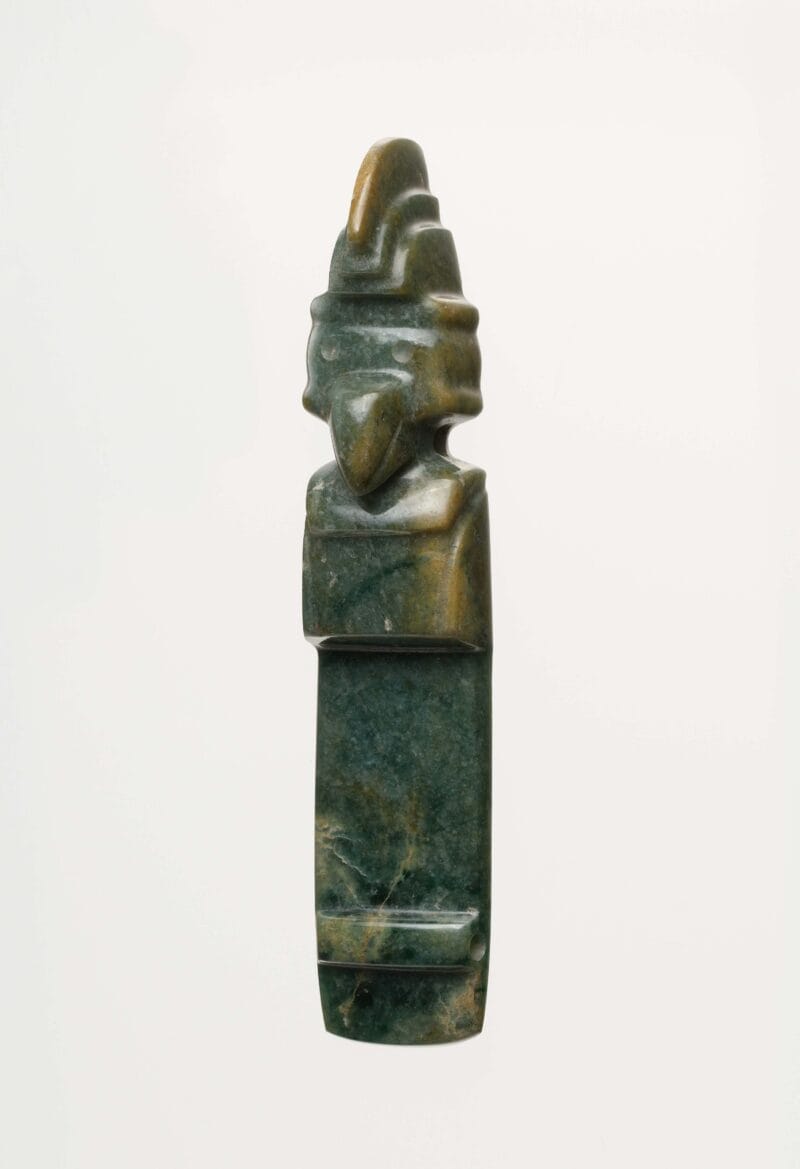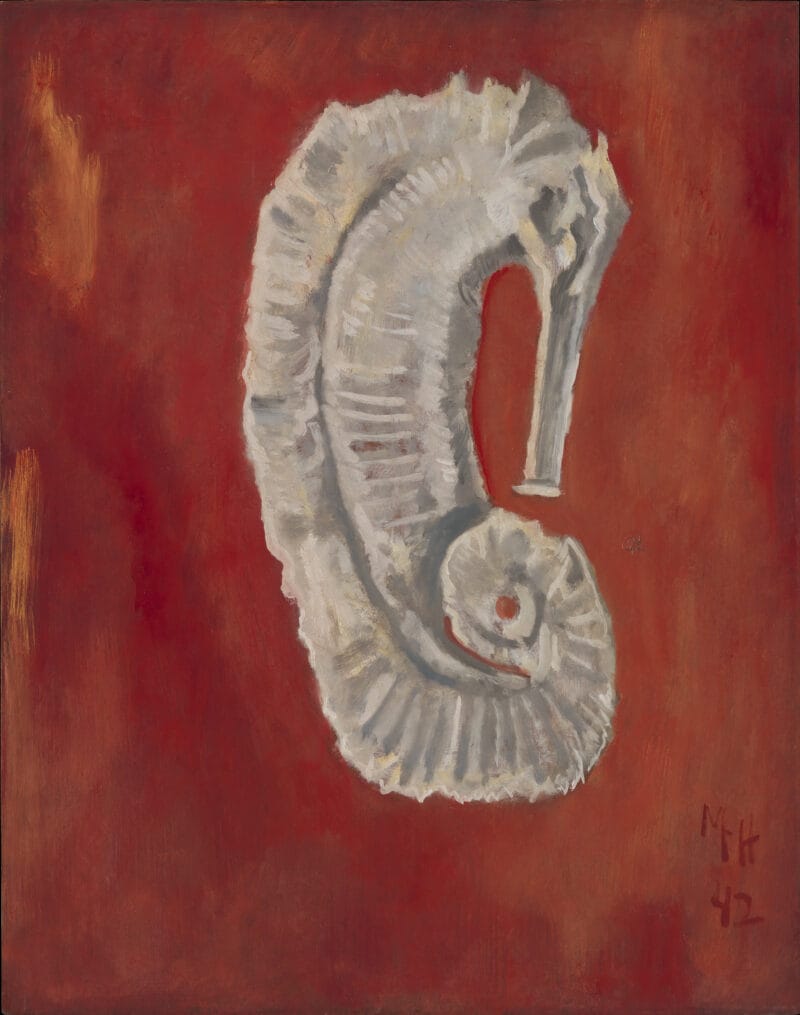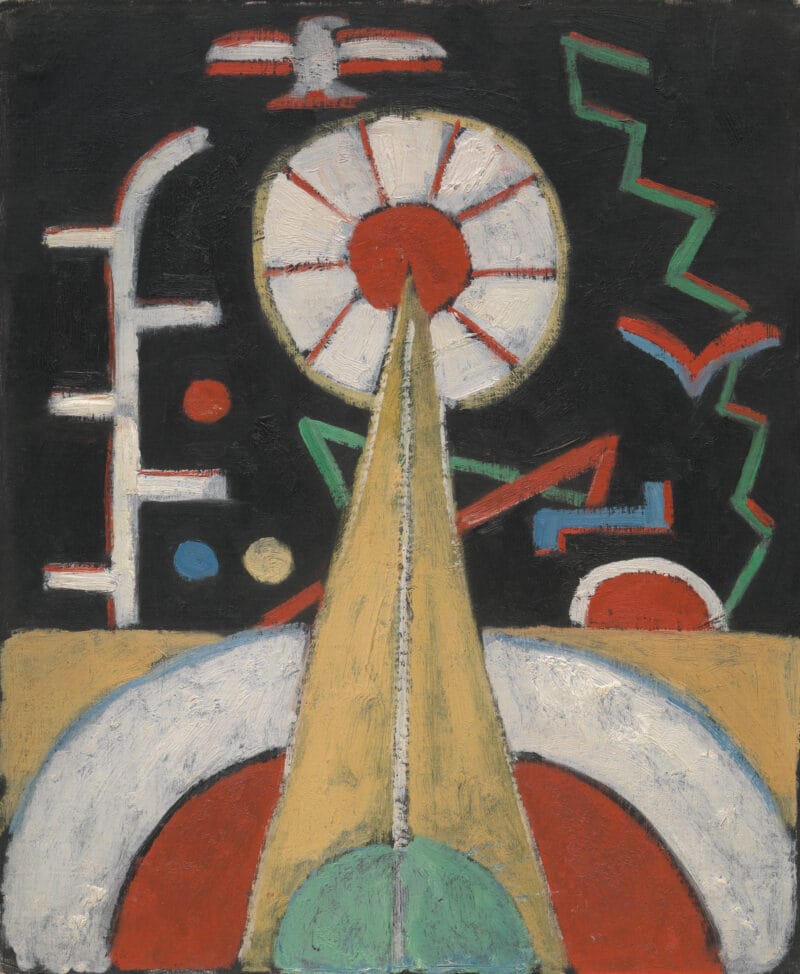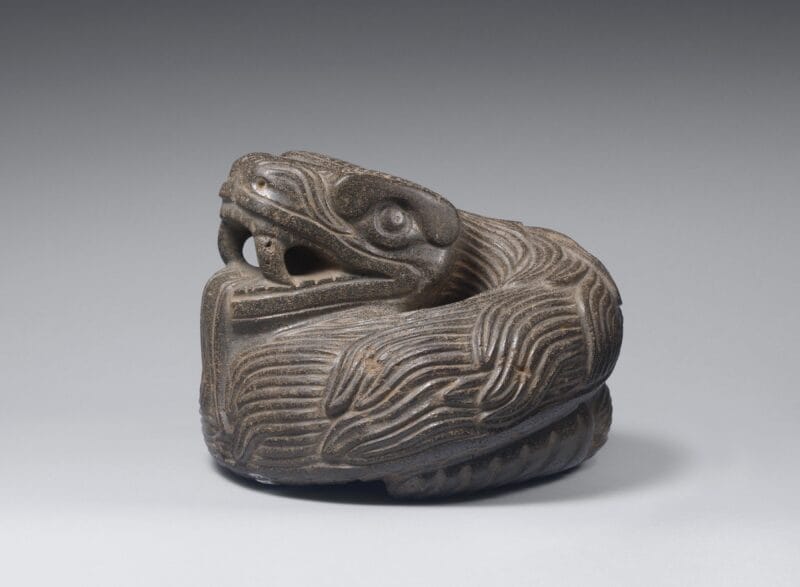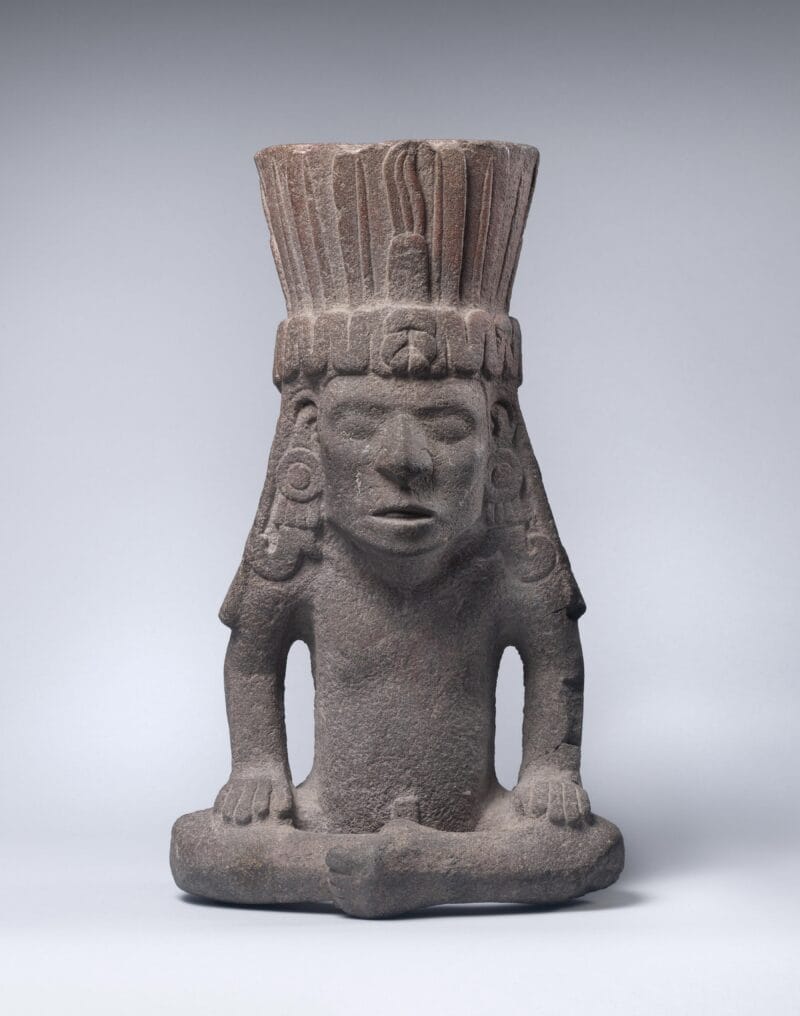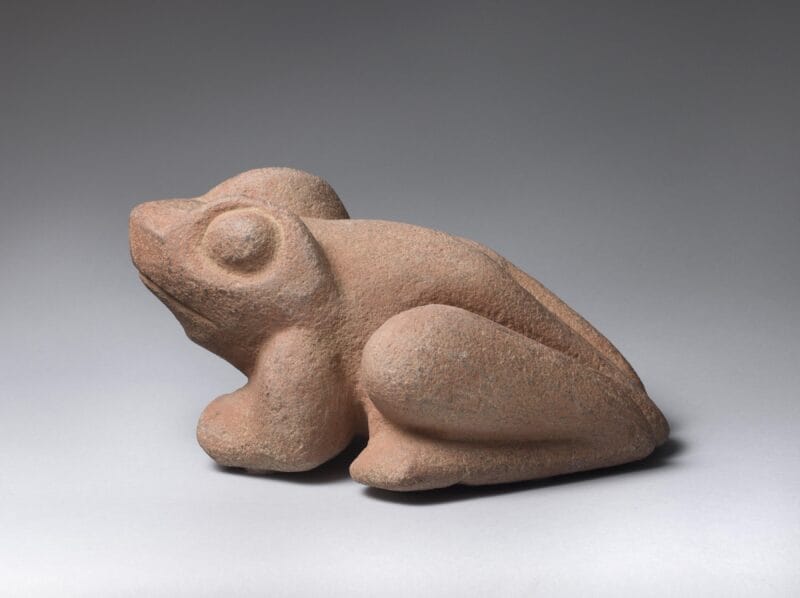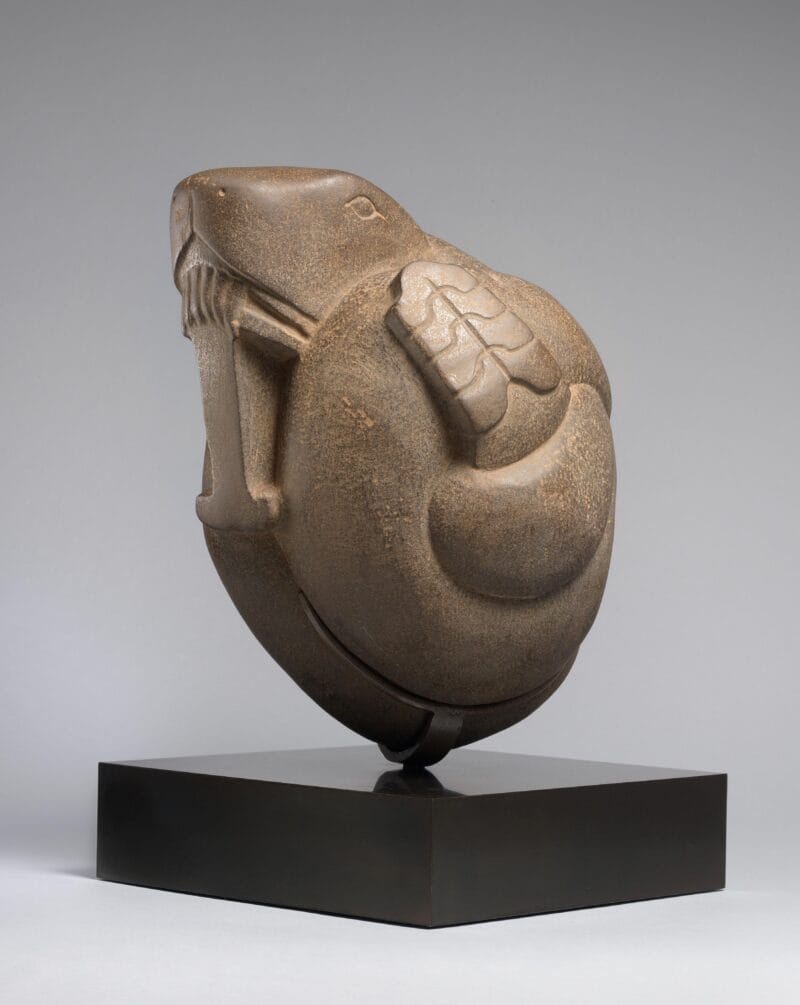
About the Object
Expertly carved and polished by an unknown Mexica (Aztec) artisan or artisans, this volcanic stone depicts a coiled rattlesnake, with the head and rattle prominently emerging from the rounded coils of the serpent’s body. Images and sculptures of snakes and serpents comprise some of the most portrayed subjects in Mesoamerican art, and were often associated with powerful gods like Quetzalcoatl, whose name means “feathered serpent.” Worshipped by earlier cultures such as Teotihuacan, the Aztecs (Mexica) believed Quetzalcoatl and Tezcatlipoca (meaning “smoking mirror”) were responsible for creating the fifth sun and incarnation of creation.
Additional Information
In addition to the development of complex political alliances with the Texcocos, Tlacopans, and others, the Mexica collected tributary taxes of goods and people that served both to enrich their central government based in Tenochtitlán and to sustain their elaborate religious rituals. These often involved human sacrifice, which was believed to ensure the continuity of both the universe and Aztec dominion. These sacrifices would usually occur following important battles and during the harvest period. Scholars believe that such beliefs related to serpents likely derived from a keen respect for snakes due to their deadly poison, as well as from observing snakes’ ability to shed their skin, symbolizing rebirth and immortality.
[Throckmorton Fine Art, New York, NY];
The Jan T. and Marica Vilcek Collection, 2003-2010;
Gift to The Vilcek Foundation, 2010;
